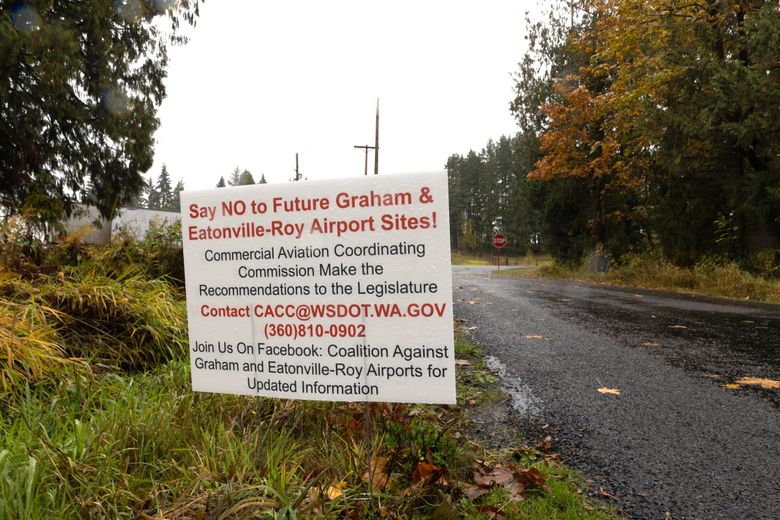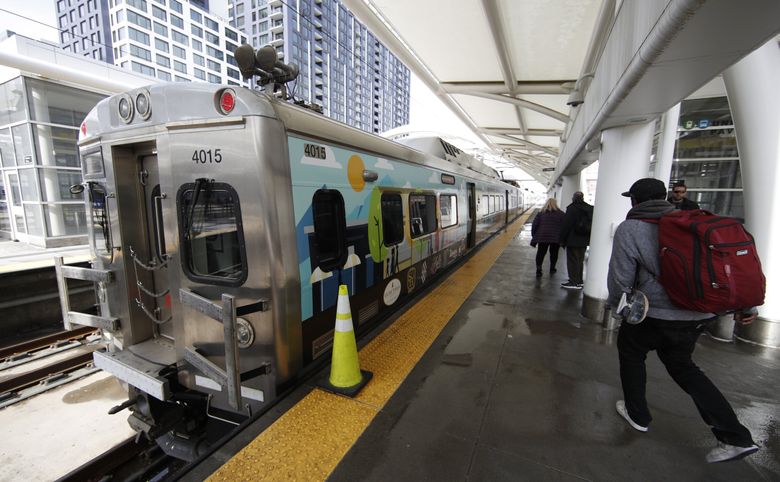

Let me tell you a couple of airport stories.
As a young reporter in San Diego, I wrote about the city and county’s search for one to replace the one-runway airport then called Lindbergh Field, 3 miles from downtown and hemmed in by the city.
Years later at the Rocky Mountain News, I was involved in covering the development and construction of Denver International Airport, one of the largest U.S. infrastructure projects of the 1990s.
I was taken back to those times reading my colleague Dominic Gates’ story about the effort to select the site for a new airport here, an endeavor pulled by projections of soaring demand and pushed against by … well, almost everyone who would be affected by the loss of a vast swath of rural land.
My experience tells me building a new airport won’t be easy. It might not even be wise.
In San Diego, the most promising site was Naval Air Station Miramar, on the northern edge of the city and then home to the Navy’s TOPGUN school — the Strike Fighter Tactics Instructor Program popularized by the Tom Cruise movies.
Miramar was big, capable of being expanded, adjacent to Interstate 15 and not very encroached by subdivisions. The trouble was that the Navy was having none of it, rebuffing the effort to transfer the base for civilian use, and eventually handing it off to the Marines.
Other potential locations were either impractical or fantastical, such as taking over touristy Mission Bay or building a new airport with landfill just off the existing coastline, the latter being something neither the Navy nor the retired admirals living in swanky Coronado would allow.
Eyes turned back to Miramar. But in 2006, voters soundly rejected a ballot proposal to press the federal government to allow a new international airport to be built there. The majority of opposition was based on concern about diminishing the military’s economic importance in San Diego and national security concerns.
The result: San Diego International Airport remains where it’s been since 1928. The airport authority has added gates, spruced up terminals, and renamed the place. It’s the second busiest one-runway airport in the world with no realistic alternative to replacing it.
Denver turned out differently.
The city replaced Stapleton airport, only about 5 miles from downtown, with a massive, six-runway “all weather” (or that was the promise) behemoth, which opened in 1995. It was the first major airport to open in the United States since Dallas-Fort Worth International in 1973 — and Denver’s effort was not only met by skepticism but required a hard push.
Stapleton had to be expanded or replaced. It was hemmed in by neighborhoods. Mayor Federico Peña first pushed to expand onto the nearby Rocky Mountain Arsenal, an Army facility that was winding down from its role in manufacturing chemical weapons. (The arsenal traced its roots to World War II, required a Superfund cleanup and is now mostly a wildlife sanctuary.)
When this proved impractical, Peña made an arrangement with an adjoining, largely rural county on the plains farther east. Denver was allowed to annex the land for the new airport, and after troubles with an automated baggage system, it was finally completed.
It was an amazing accomplishment, yet it cost $8.5 billion and didn’t come easy.
Stapleton’s site was redeveloped into houses, warehouses and retail centers.
Although Denver International Airport is 19 miles farther east, it’s adjacent to Interstate 70 and painful cab fares are now eased by a fast, convenient electric-powered train that goes all the way to Denver Union Station.

Which brings us to our situation. Seattle-Tacoma International Airport (run by the Port of Seattle; Tacoma has nothing to do with it) and Paine Field in Snohomish County won’t have the capacity to meet future needs.
By 2050, traffic in the region is projected to grow to 94 million annual passengers. Even enlarging both current airports will leave the region unable to accommodate 27 million annual passengers. And that doesn’t include future air cargo needs.
As Gates reported, “A state commission last month narrowed the search to a shortlist of three locations in rural Pierce and Thurston counties, and by June 15 must settle on a single site that it will recommend to the Legislature.
“In a confusing wrinkle, the state Department of Transportation is also still assessing a fourth site. Just west of Enumclaw in Southeast King County, this location would eat up significant green space halfway between Seattle and Mount Rainier.”
Yet opposition is universal, from landowners, tribes and environmentalists. Another problem: None of the sites being considered for another major airport has adequate infrastructure connecting it to population centers.
One of Washington’s great achievements is land use policy that preserves open space. An airport, and the resulting sprawl, would cause severe degradation in and around it.
Rather than another airport, Washington should focus on enhancing and expanding existing Amtrak service, as well as building high-speed rail.
Airliners contribute between 2.5% and 3.5% to the greenhouse gases that are behind human-caused climate change. Passenger trains are responsible for far less, especially if they are electrified.
China has built around 23,500 miles of high-speed rail since 2008. An authoritarian nation can easily make this happen.
But Japan, a liberal democracy, is famous for its shinkansen bullet trains. They operate at 200 mph, link the nation’s major cities and haven’t suffered a single passenger fatality in 50 years of operation.
Western Europe is crisscrossed with high-speed trains. They’ve replaced airliners on many short hops and European countries want to make this happen more often.
The United States is far behind — the only advanced, urbanized nation on Earth without high-speed trains (California bungled its effort and Texas is attempting to build a line between Dallas and Houston). Finding the ways to bring down costs here is paramount but doable.
It’s not an either-or proposition, but a yes-plus one. Airliners have their place. But so do passenger trains. They would make a far better investment than yet another airport.